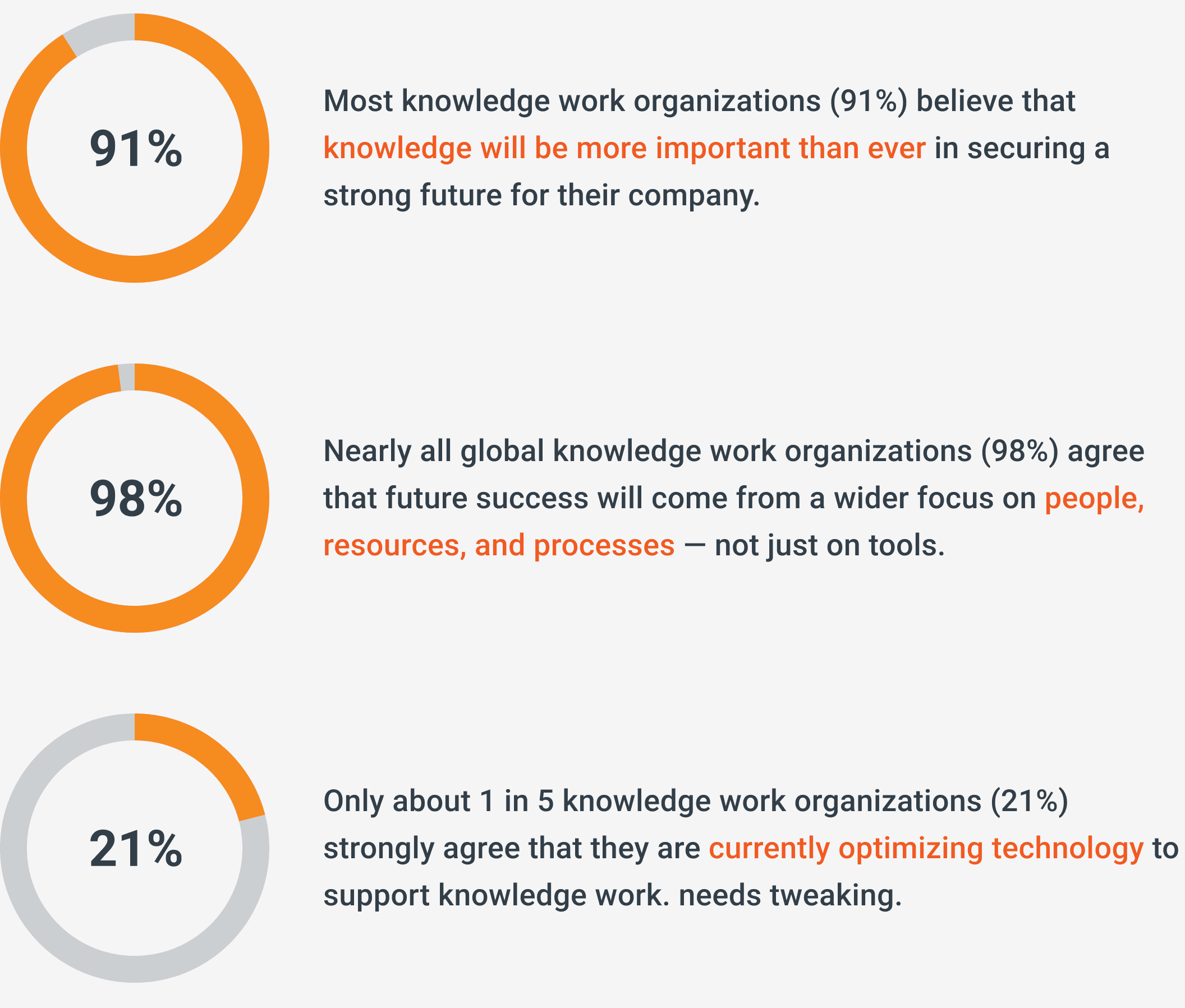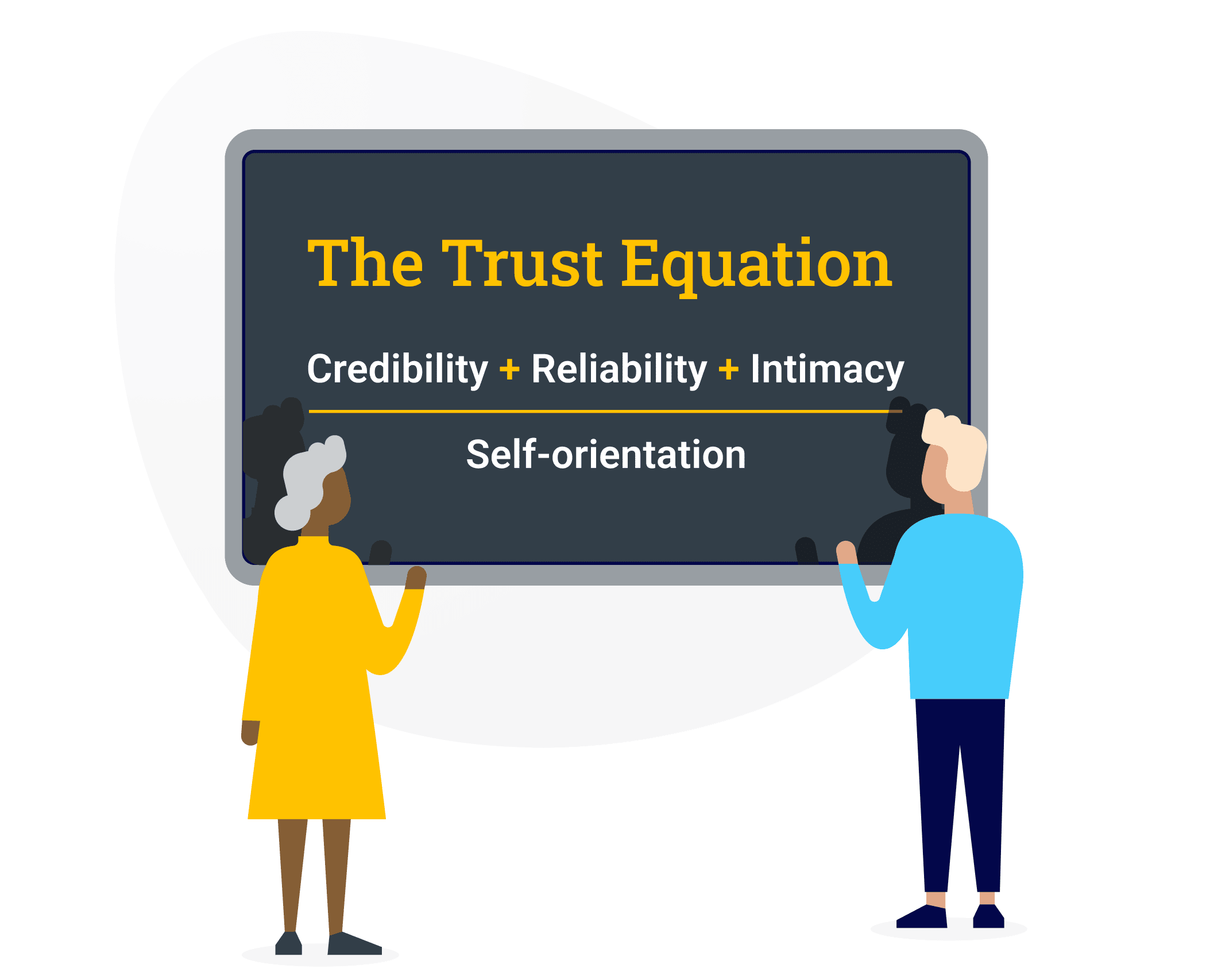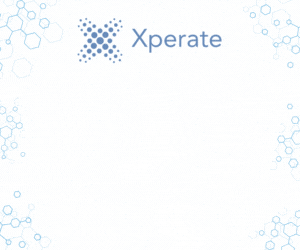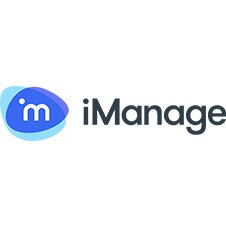Nine steps to leading change in law firms – find out more with iManage
Take a broader view
How should you be organized for the modern workplace? What is your firm’s goal for a year from now? Five years from now? Ten?

Source: The Knowledge Work Maturity Hub
Investing in technology without an ironclad strategy that includes governance and management of the work product can be a very expensive way to find out whether people will embrace the change.
Build a business case
A vital first step in transforming processes into culture is helping people make the connection between the change and achieving better business outcomes.
Until they know what’s in it for them and buy into the logic behind the investment, people are likely to resist putting time and energy into changing their process. They may even look for workarounds if the change seems unnecessary or is cumbersome to adopt.
Engage a user adoption expert very early on to:
- Gain support from users as you begin to plan for a change
- Help you find the right people to move the conversation forward
- Build a coalition of the willing to help bring reticent colleagues on board
- Greatly increase the probability of success
While hiring a specialist may seem like a luxury, it is a wise investment when you consider the higher costs of non-adoption, reduced compliance, and increased risk to the firm.It is an added expense, but if the firm fails to support users throughout a change and adoption suffers, the firm’s ROI from its investment plummets. Not only is there no realized benefit, but whatever issue or issues the change was meant to mitigate still linger, unaddressed.A cost-benefit analysis simplifies the business case for bringing in dedicated change managers and user adoption specialists.You can begin by monetizing these cost or risk variables:
- Not changing, upgrading, or implementing new technology
- Implementing new technology without evaluating if new processes are required to support the new way of working and taking steps to ensure adoption
- Tapping an internal resource who lacks the specific expertise for this work or whose time is better spent billing higher-value activities for the firm
Focus on leading change
Change is challenging. You are replacing something that is working with the unknown.
People know it is going to be different, and it may affect their work lives in a big way. They only have your word that change is going to be better. They may love it, or they may hate it, and people don’t welcome that kind of uncertainty.
Your role is to lead and facilitate the change.
Be curious. Become a student of what is working for people and what is not. You’ll need to get in the trenches to find those who are willing to talk about what needs to change and why.
Once people see that you are listening and that you have a genuine desire to make their work easier, they’ll grow less wary and more collaborative.
When you listen:
- Be open to learning what problems people want to solve before you decide what changes are most likely to solve them.
- Be prepared to counter your own biases, as well as your team’s.
- Be ready to shut down your inner authority figure.
- Apply the knowledge you gain from listening as you work with your team to build an effective strategy.
Foster leadership in others
Expertise is well and good, but senior leaders and technologists should beware of providing too much guidance, too soon.
This can undermine the important objective of fostering individual leadership on your team. And there are other ways to make that wealth of experience pay dividends for the organization.
Set aside the fear of failure
We learn from our failures, and sometimes they are a necessary step on the path to success. As counterintuitive as it may sound, your growth as an organization depends on maintaining a healthy approach to failure.
Being a good facilitator means creating an environment where junior staff feel comfortable contributing to the conversation without the worry of being judged.
Remain encouraging and supportive and people will feel they have a role in creating your change strategy. This gives them a compelling reason to engage.
Establish the lowest guardrails you can
If the initial approach is not as successful as you had hoped, work with the team to discover what went wrong so you can make the necessary adjustments and try again.
Your future leaders are learning from trial and error to grow organically into better decision-makers. More significantly for the firm, they’ll have learned from your example how to pass these important skills on to others.
Welcome new ideas
People change, goals change, options change, and technology changes.
Every project, every assignment, every initiative — no matter how similar to something you’ve done before — might call for a new approach. “We’ll do it the way we’ve always done it.” is not a practical strategy for success.
It doesn’t mean that leaders should pivot 180° or reinvent the wheel at every curve, however — that is unsustainable. But likewise, don’t assume prior experience is all you need to arrive at a new destination.
Leaders must stay curious, be open to new approaches, and hear people out when they have new ideas. This receptivity makes the journey intriguing for everyone and helps keep them all on board.
Leadership is a continuous process of discovery
To go beyond ordinary:
- Focus on simplicity
- Keep reframing the questions
- Maximize resources to optimize team efforts
- Practice self-reflection
Great leaders hone their expertise by practicing it, and while that may include being agents of change, it does not make them change experts. Retaining a sense of humility is key for even the most seasoned, successful leader when thinking about how to lead real change.
Great leaders wake up every day with a fresh set of eyes, open to new opportunities — and critically appraise their impact. When you synthesize feedback with an open mind, you quickly begin to see and experience the rewards.
Build trust
The Trust Equation is a framework for understanding trust in professional relationships.

According to this framework, an individual’s self-interest — their overriding desire for personal reward or accomplishment — interferes with building trust, where the focus is on embracing curiosity and listening skills.
Building trust requires minimizing self-orientation and establishing a foundation for effective influence. You can encourage people to share their feelings, perspectives, and ideas by asking open-ended questions that begin with “How,” “What,” or “Why?”
After you’ve done your stakeholder analysis:
- Move quickly to bring people together before making changes.
- Identify who may be impacted and openly discuss compensatory actions.
Support people throughout a change and incorporate their feedback to ensure they feel invested, or you risk them continuing to operate per the status quo.
For the best results, implement changes incrementally and find those pockets of willingness.
Cultivate relationships
Soliciting feedback from your users can help you see the changes through their eyes.
Learn how it’s going to affect them, and you’ll be better equipped to build value for them. Target key groups that reflect positively on the change and rely on them to help you pave the path ahead.
- Reframe the conversation from one where you are imposing change to one where you seek input on solving a problem.
- Solicit people’s thoughts or ideas about what a successful change might look like across teams.
- Frame it as a collaboration to quell the instinct to defend the status quo and encourage people to expand their thinking.
Whether you are building a strategy for automation of repetitive tasks or contemplating more advanced processes using generative AI, your commitment to following best practices is essential to a successful outcome.
Evaluate the job to be done
It is critical to have a foundational understanding of your key content, data, processes, and workflows before considering an AI solution.
Even when change is not optional, transparency is the key to success. Remember that your first aim is helping people connect the change to achieving better business outcomes.
Make the “why” resonate and you’ll gain their cooperation.
Find your pioneers
Some individuals are always keen to experiment.
They’ll show colleagues the best ways to use new tools. Better still, they’ll discover new areas where change can influence or improve a pain point.
And, when they talk to others across the firm, this peer-to-peer communication operates like a hive mind.
While it is important to remain positive about the change, overall, you should have a plan for addressing the things that could be better. This is another way to build trust.
Keep the lines of communication open
As adoption increases, check in with users and collect their ideas to improve the process or technology. Listen to their concerns and explore their challenges. Find outcomes you can both support.
Learn from experience
There is no innovation without failure, so a measure of humility is called for.
The world’s greatest innovators and achievers have failed more than most of us have even tried. Make certain people know they can bring failures out in the open so you can all learn from them.
- Have SMART goals and measure adoption.
- Distinguish whether an activity is mandatory, optional, or a test.
- Communicate with the team so it’s clear when expectations aren’t met.
The path to achieving higher-order business outcomes begins with establishing a secure foundation for how your knowledge is created, managed, governed, and accessed.
And with a framework for structured organizational progress, you can begin to follow that path right now. Gain a deeper understanding of the Knowledge Work Maturity Model from iManage.
iManage Commentary
Knowledge is the new global currency
iManage analysis of the Knowledge Work Maturity Model.



